We cannot change the past, but we can influence our future. So, why are we so dead set on feedback — which deals with our past performance?
And, do we have an alternative?
Sure we do!
Feedforward comes to the rescue!
If you’re not sure what this concept means, worry not — just sit back, relax, and read this blog post.
We’ll cover:
- What feedback and feedforward are,
- Examples of feedback and feedforward,
- 5 reasons for switching from feedback to feedforward,
- 6 essential components of feedforward, and
- 6 steps for conducting feedforward.
Let’s get started!

Table of Contents
What are feedback and feedforward?
Feedback is a comment on an action or behavior that already happened, with the purpose of helping the receiver of the feedback become better in the future.
Of course, if you want to achieve your goals, you need to know how you’re doing your job. You have to know whether your manager is satisfied with your performance.
However, the trouble is, feedback is too focused on past events.
Feedforward, on the other hand, is a relatively new term, developed by Marshall Goldsmith, a business educator and coach. Instead of commenting on actions and behavior from the past, feedforward provides comments for the improvement of an ongoing action or behavior.
This type of assessment is more constructive, as it helps you improve yourself on the go, while you’re doing the said task.
If you’re not sure what the difference between these two terms is, we’re here to shed some more light.
What’s the difference between feedback and feedforward?
In the podcast The Cult of Pedagogy, in an episode dedicated to feedforward, Joe Hirsch, an expert on leadership and communication, highlights the most important difference between feedback and feedforward — different focus.
Namely, the focus of feedback is on the past, while the focal point of feedforward is the future.
Although the most important, that is by no means the only difference between these two terms.
Here are the most prominent ones.
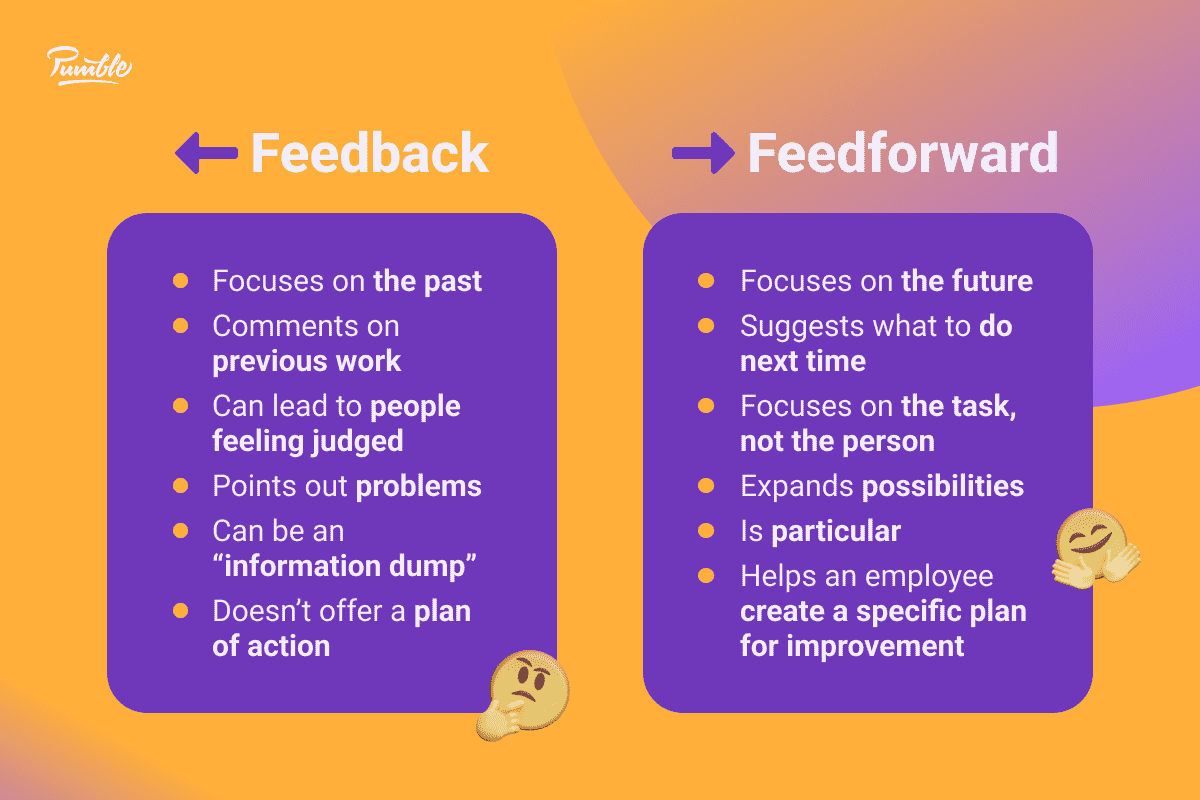
The difference is probably much clearer to you by now, but, just to be on the safe side, in the following paragraphs, we’ll consider some examples of both feedback and feedforward.
Examples of feedback and feedforward
To make sure you’re crystal clear about the difference between feedback and feedforward, let’s look at some examples.
🔸An example of feedback
Nora is a new sales representative in a vending machine company. Today, she had her first presentation to a possible client. Her manager Katie was also on the call, after which she gave Nora some feedback on how it all went via Pumble, a business messaging app.
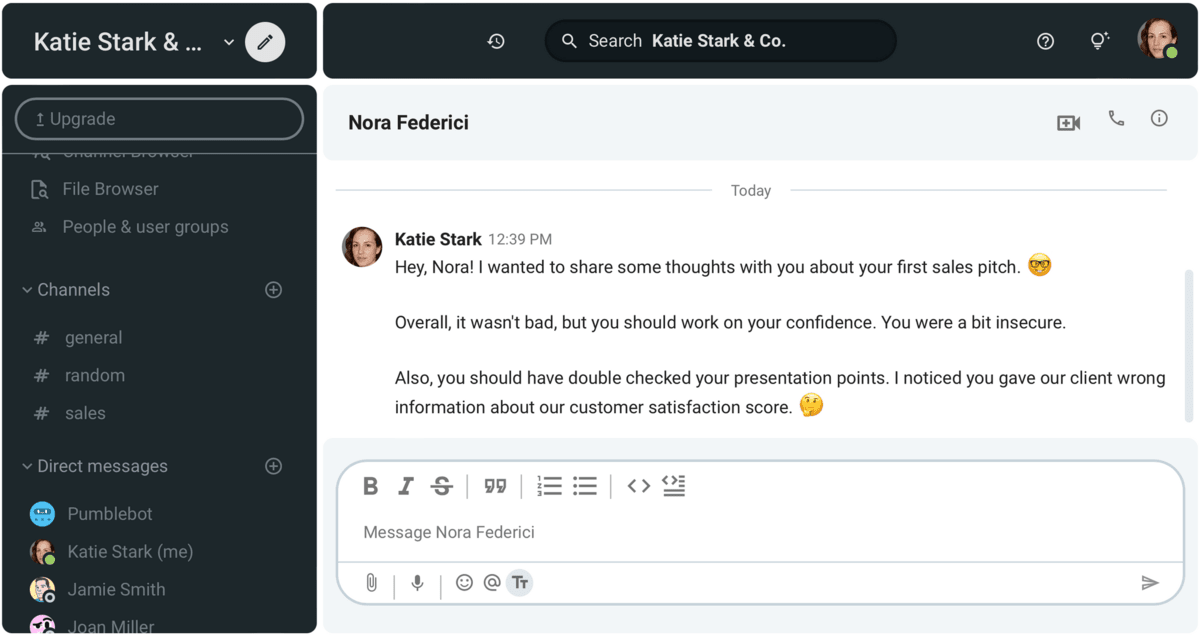
As you can see, the focus is on a past event. Also, this may feel a bit personal, and Katie doesn’t provide Nora with any plan of action.
🔸An example of feedforward
Nora is a new sales representative, and she’s getting ready to pitch a sales presentation to a potential client next Monday.
Katie, her manager, is aware that it’s Nora’s first time leading such a presentation, so she suggests they do a mock presentation on Friday. During that mock presentation, she would practice feedforward. In other words, she’ll help Nora deal with potential problems before they arise.
Let’s look at this Pumble example.
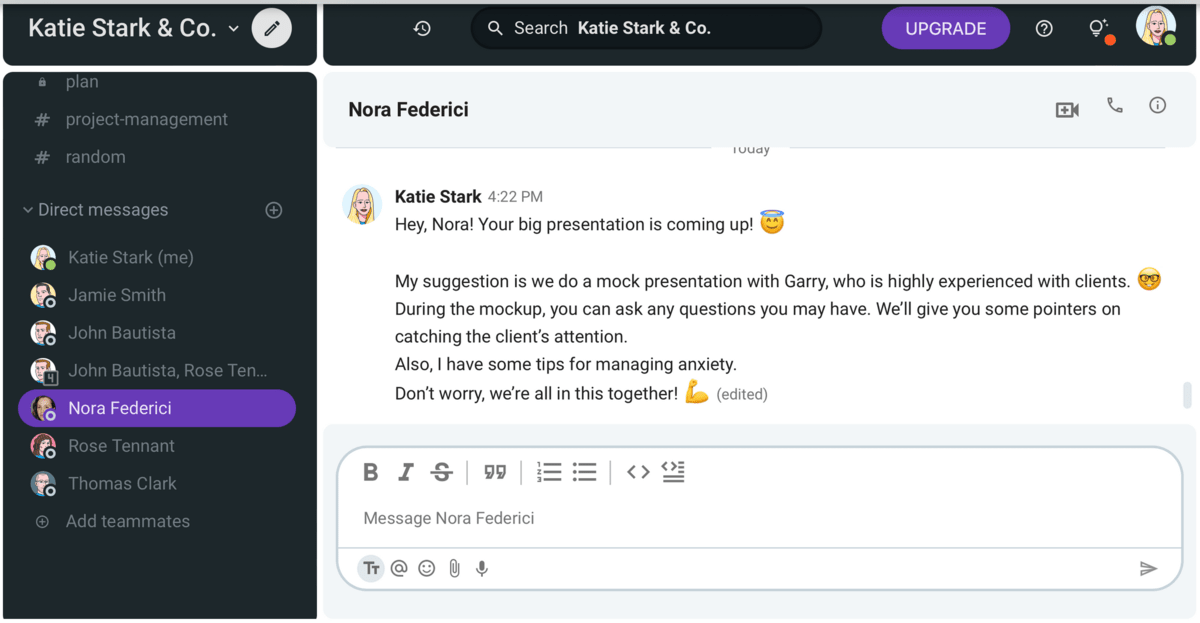
In this example, Katie’s concern is with the future — she takes much-needed steps to prevent any mistakes and inconveniences. She even has some tips for battling anxiety. Kudos to you, Katie!
—
Now that we know the definitions of both feedback and feedforward, as well as the main differences between them, it’s time we consider the main reasons for switching from feedback to feedforward.
Exchange constructive feedback and feedforward on Pumble
Why switch from feedback to feedforward?
When we receive negative feedback, our brain releases a stress hormone called cortisol. This makes us defensive and unable to think clearly about our next steps.
In his book The Feedback Fix, Joe Hirsch colorfully illustrates what it’s like to give feedback to someone:
“Giving feedback to others about things they can’t change is like asking them to step out from a block of cement that has already set.”
Not a pretty situation to find yourself in, right?
That’s why we’ll consider some of the benefits of feedforward.
Benefit #1: Feedforward is future-oriented
In the previously mentioned podcast, Joe Hirsch calls people who give feedback “window gazers” — people who just stare through their window and tell you what they see. A pretty passive role, which reminds me of Hitchcock’s Rear Window.
On the other hand, according to Hirsch, those who give feedforward are “mirror holders”. They just hold the mirror up to others, so they can see for themselves what they can do in the future, to make things better.
Future is the keyword here.
Namely, feedforward is focused on the things that can be improved, instead of positive or negative feedback on actions from the past.
Or, as our contributor Michael O. Cooper, an Executive Coach, would put it:

“Feedforward also helps leaders keep themselves and their teams aligned on future-focused solutions instead of simply focusing on past mistakes, creating a positive work environment where people feel supported and aligned with their leader’s overall goals.”
In other words, a positive work environment is another welcome consequence of practicing feedforward.
Benefit #2: Feedforward is not judgmental
As opposed to feedback, feedforward is not judgmental.
It doesn’t reinforce negative interpersonal relationships among employees.
For instance, when we hear about our mistakes from the past (aka those we cannot fix), a certain feeling called learned helplessness arises in us. We feel that we can’t do anything about our mistakes and give up.
On the other hand, feedforward is empowering.
Namely, when we receive this type of assessment, in a way, we get instructions on what to do in the future, when faced with a problem.
This also helps build trust in teams and leads to better overall performance.
Benefit #3: Feedforward helps you discover leaders in your team
Maybe the most positive advantage of feedforward, in comparison to feedback, is the fact that it can help you discover who among your teammates has the potential to be the leader.
In other words, you don’t manage other people’s performance but rather develop their talent. This reinforces the growth mindset in your teammates — your colleagues believe their talents can be developed.
Also, they’ll have the necessary tools to avoid the mistakes they were making, as feedforward gives them new methods that can help them solve problems.
💡 Pumble Pro Tip
One of the most important soft skills all leaders should possess is good communication with their employees. We have the perfect blog post to help you improve your leadership communication skills:
Benefit #4: Feedforward encourages growth
Feedforward helps employees grow and provides them with guidance, as our contributors noticed.
Namely, in our search for answers, we contacted Smita D Jain, Founder and CEO at Empower Yourself and Executive Coach, who told us:

“Feedforward focuses on future-oriented goals and provides constructive feedback on how to improve future performance, rather than dwelling on past mistakes.
It is a powerful tool for motivating employees and encouraging positive change.
It also helps shift the focus towards solutions and possibilities, rather than problems and limitations, which can enhance the team experience and improve outcomes.”
Similarly, Penny Sinclair, HR Manager at Worth It Media, shared with us that, when contemplating whether to choose feedback or feedforward, we should consider our current performance management system and goals. She elaborates:

“Feedforward is more effective in certain situations, such as when employees need guidance for improvement or are new to their role.”
Our next contributor, Shirley Borg, Head of Human Resources at Energy Casino, adds something similar:

“Feedforward can be more focused on future goals and potential improvements, which can be helpful for employees who are already doing well and looking to enhance their skills even further.”
As you can see, our experts agree that a feedforward assessment is a useful tool in helping employees further develop their skills.
Benefit #5: Feedforward promotes psychological safety and open communication
Last but not least, feedforward is a very effective tool for fostering psychological safety at work.
In Michael O. Cooper’s words:

“Feedforward promotes psychological safety, trust, and alignment between modern leaders and their teams through proactive performance conversations. By implementing feedforward, leaders can foster performance conversations that strengthen organizational motivation and engagement.”
He further elaborates on the role feedforward plays in nurturing open communication among the team members:

“Most importantly, feedforward fosters openness and honesty between leaders and their teams, helping them collaborate and communicate effectively to face difficult situations together, instead of avoiding those conversations altogether or working in a splintered, inefficient manner.”
According to Cooper, effective communication is paramount in overcoming any problems that might arise.
6 Essential components of feedforward
Practicing feedforward can be a walk in the park if you familiarize yourself with its basic elements, that is, the characteristics of feedforward that make it so effective.
To do that, Joe Hirsch suggests that we fix what’s broken. In this case, feedback is “broken”, so we have to “repair” it. Or, more accurately, R-E-P-A-I-R it.
You got that right!
Namely, Hirsch offers an acronym that can help us better understand feedforward. According to him, feedforward:
- R — regenerates talent,
- E — expands possibilities,
- P — is particular,
- A — is authentic,
- I — makes an impact, and
- R — refines team dynamic.
Now that we know the meaning of this acronym, let’s get into a little more detail.
Component #1: Feedforward regenerates talent
According to a survey Attracting and Retaining Millennial Professionals, conducted by Robert Walters, 91% of millennials consider career progression a top priority.
If we take into account that feedforward is all about growth and development, it’s clear its role in employee engagement and satisfaction is paramount.
So, forget about foosball tables and focus on providing your employees with feedforward — it will help them develop their skills.
Component #2: Feedforward expands possibilities
As opposed to feedback, feedforward doesn’t point to problems, but rather helps your employees expand on their ideas.
In the previously mentioned book The Feedback Fix, Hirsch illustrates this point using Pixar studio’s concept called “plussing”.
Namely, at the end of the day, Pixar’s employees gather around to critique one another’s work, in order to improve it. There’s only one rule: when pointing out a problem in someone’s work, the employees have to propose an alternative solution. They have to add their own idea to the existing one, thereby expanding possibilities for development.
The concept of “plussing” can easily be applied in any type of business meetings. Simply, instead of rejecting your colleagues’ ideas, you can try modifying them. For instance, instead of “I don’t like that idea. It’s not feasible.”, you can say “Interesting! Maybe we could make this minor change and try implementing it?”
Hirsch distinguishes between silencers — closed and negative reactions — and amplifiers — open and positive responses. Let’s take a look at the table below, for further clarification.
| Silencers (-) | Amplifiers (+) |
|---|---|
| “Yes, but..” | “Yes, and…” |
| “No way that’s going to work!” | “Why don’t we try this?” |
| “I can’t imagine that happening!” | “How do you suggest we do that?” |
| “We don’t have enough people to do that.” | “We can try to reallocate.” |
Component #3: Feedforward is particular
One of the main characteristics of feedforward is that it is particular. It focuses on a specific problem you can work on, thereby avoiding information overload, so common in feedback sessions.
Feedforward allows you to pick your battles and zero in on those segments that need the most improvement in the future.
As you’re giving your employees your two cents on their work as it’s happening, you’re providing them with an opportunity to act on it right away.
Component #4: Feedforward is authentic
Hirsch emphasizes people’s need for authentic communication. This is something feedforward can help with.
Contrary to what you might think, people actually don’t like a praise sandwich — a piece of criticism in between two sketchy praises. They want the truth.
Feedforward helps you pinpoint the problem and suggest the way to a solution.
Component #5: Feedforward makes an impact
Sometimes, after receiving feedback, people don’t know what exactly they’re expected to do.
Feedforward, on the other hand, is part assessment and part coaching. That is why people find it more useful and impactful than feedback.
Component #6: Feedforward refines team dynamic
Finally, feedforward is a team sport, as Hirsch would say.
That is precisely why he suggests practicing “creative abrasion”. This type of collaboration happens when people with conflicting views work together on a project. Inevitably, conflicts are bound to occur in these situations, but that is exactly what helps them get a better result.
By using feedforward techniques, employees use their opposing views as a prop for developing ideas.
Feedforward is especially useful in lateral communication, since it allows for a better exchange of information, without fear of repercussions — as would be expected in upward communication.
Host creative brainstorming sessions in Pumble
—
Now that you know a lot more about the very concept of feedforward, it’s time to give you some advice on conducting feedforward.
6 Steps to feedforward assessment
If you decided to give feedforward a go, we have prepared all the necessary steps you should take.
With the help of our experts, we’ll make sure you become a true master of feedforward assessment.
Step #1: Set clear goals and expectations
This one probably doesn’t come as a surprise. If you want to achieve any success, you have to set your goals.
Also, you have to manage your expectations.
In other words, you should know what specific areas you and your team need to work on.
For instance, you might want to improve your team’s sales presentation skills.
Let’s see how Katie Stark, a sales manager in a vending machine company, handles this problem, by using the feedforward process. Namely, she’s being proactive and addressing potential problems before they even occur.
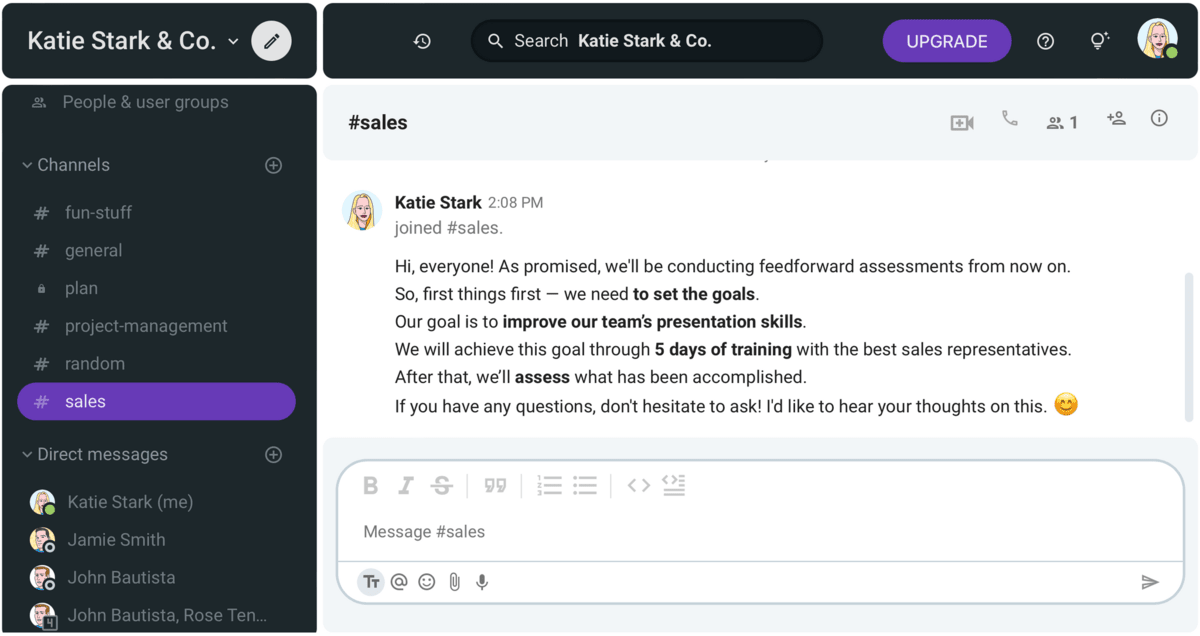
💡 Pumble Pro Tip
Maybe the most effective goals you can set are S.M.A.R.T. goals. If you need help setting S.M.A.R.T. goals for workplace communication, here’s a blog post tailored to your needs:
Step #2: Listen to your employees and collaborate with them
After you’ve presented your goals to your employees, you should be prepared to listen to their suggestions and impressions.
One of the crucial components of good collaboration is active listening. Discuss the goals you’ve set with your colleagues and analyze what needs to be done.
Let’s expand on the example from our first step. As we said, the goal is to improve your sales team’s presentation skills.
Before anything else, talk to your team. Ask them to pinpoint the main problems in their current sales sessions, so you know exactly what to work on.
Katie is doing just that in our Pumble example below, and Nora, a new sales representative, is speaking her mind.
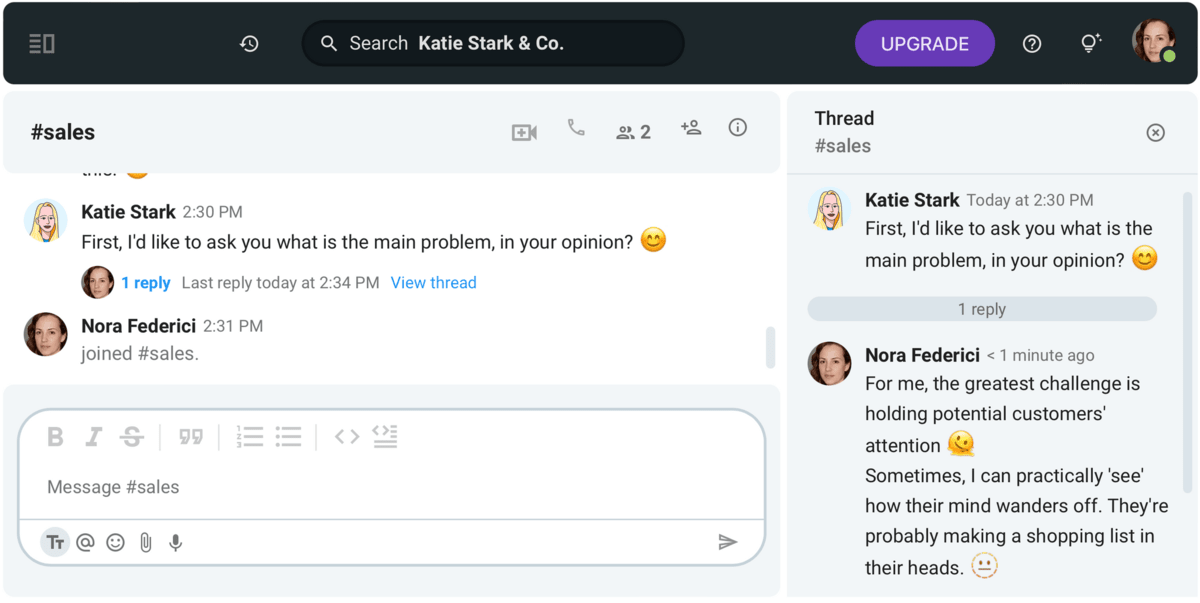
Step #3: Plan your feedforward assessment
Now that you know what the main challenges your teammates face are, it’s time to delve deeper into these problems. This means you need to cover the following points:
- Specify who will be involved in the assessment,
- Decide on a timeline for implementation, and
- Choose the assessment tool.
Employees involved in the assessment process should also fill out a self-evaluation form. As they will reflect on their accomplishments, challenges, and areas that might need improvement, this part of the process is crucial in gaining insight into what needs to be addressed.
However, don’t forget that this assessment doesn’t deal with past performance. Its sole focus is on the future.
Let’s see how Katie Stark presents a feedforward assessment plan to her Sales team in the Pumble example below. She’s explaining the specific steps she and her team need to take to conduct the feedforward assessment.
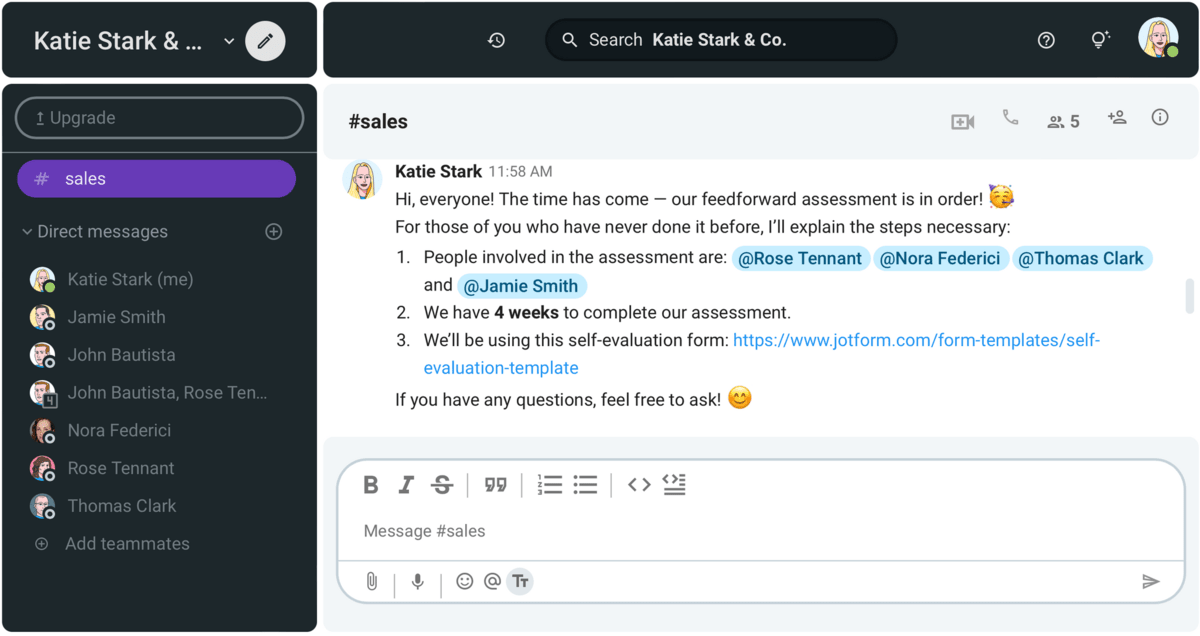
Step #4: Conduct the assessment
After carefully presenting your teammates with the plan, it’s time to take action.
We already mentioned a self-assessment form that the participants should complete.
Aside from that, it’s time you listen to your teammates’ needs and pain points attentively. Engaging in deep listening is extremely helpful, as it allows you to truly understand the needs of your employees.
In the Pumble example below, Katie is offering her teammates two options for sharing their challenges with her — in one-on-one meetings or via chat.
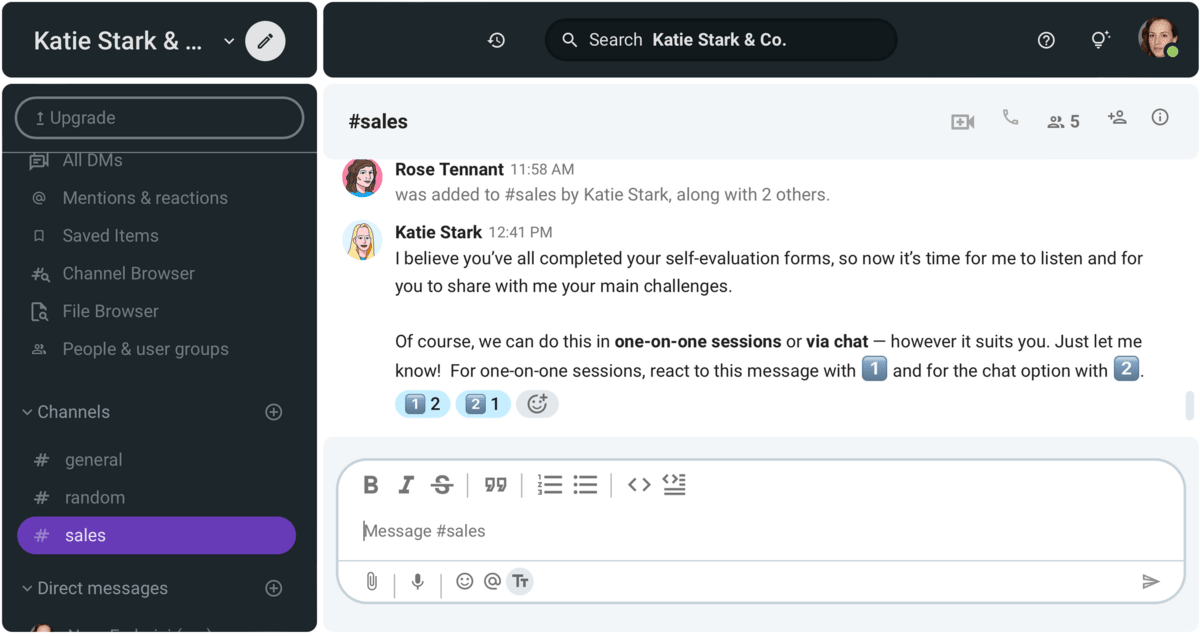
Host productive feedback sessions with your team over Pumble
Step #5: Take action on improving areas that need improvement
Now that you and your team are aware of the most common challenges you’re facing, it’s time to take action and work on improving them.
This might encompass some of the following:
- Webinars,
- Soft skills workshops,
- Online courses, or
- Books for further self-development.
Again, let’s turn to Katie, and see how she handles this part of the feedforward assessment.
She provided a document with various self-improvement resources for her team, so they can access it anytime and work on their problem areas.
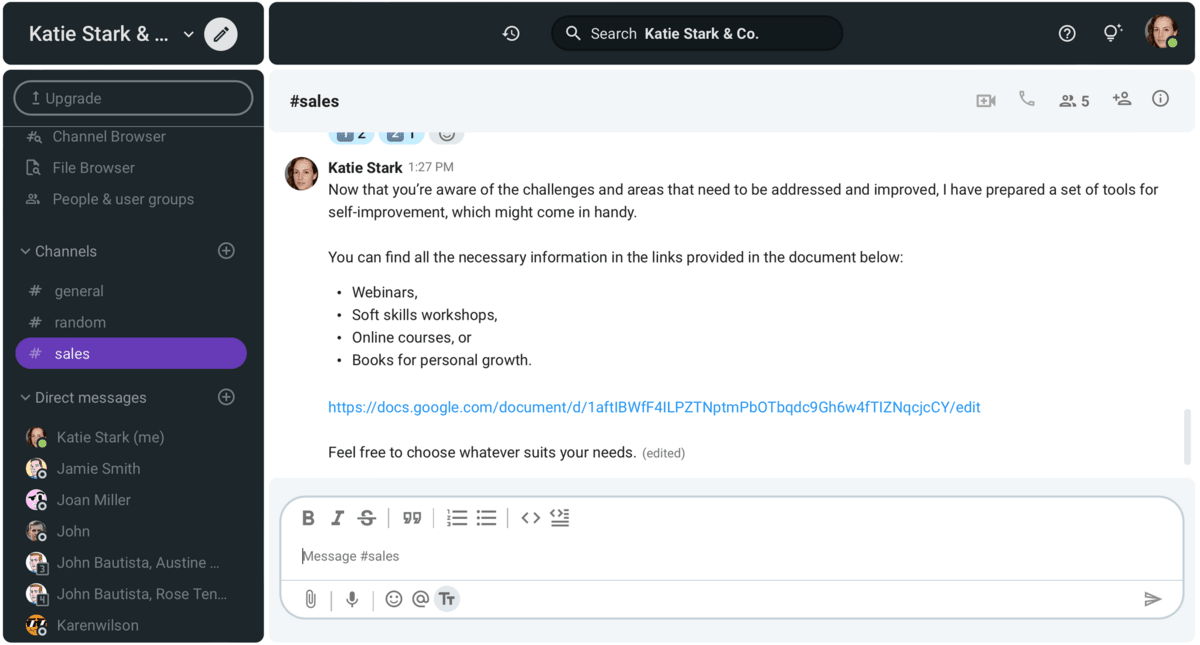
Step #6: Evaluate the results of the feedforward assessment
Finally, all that’s left for you to do is evaluate the results.
This shouldn’t be a problem if the goals you’ve set are S.M.A.R.T., as they facilitate monitoring the process.
In other words, if the goals you’ve set were specific, measurable, attainable, relevant, and time-bound, it’ll be easier for you to gauge the success of your assessment.
This is also the perfect time to set the date for the future feedforward assessment. Don’t wait too long — the next feedforward assessment should follow in the next few months.
Here’s how Katie announces to her team that the feedforward assessment is over.

Use Pumble to provide feedback and feedforward
For many of us who work remotely, in-person meetings aren’t an option, so in order to deliver constructive feedback and feedforward, we need to have an efficient business messaging app, like Pumble, at our disposal.
Thanks to Pumble, we can easily communicate with our colleagues via channels or direct messages. What’s more, conversations can be continued in threads without interrupting the flow in one’s inbox or channels.
The great thing is that all the messages you send to someone will be there forever, since Pumble has an unlimited message history.
The same goes for files and, as an added bonus, Pumble supports sharing files of any size — this might come in handy when you want to send a written version of feedback or feedforward to your employee.
Of course, if you want to go the extra mile and provide face-to-face feedback or feedforward, you can always schedule a video conference. And, if being on camera isn’t your thing, there’s always the option of giving the person a quick voice call.
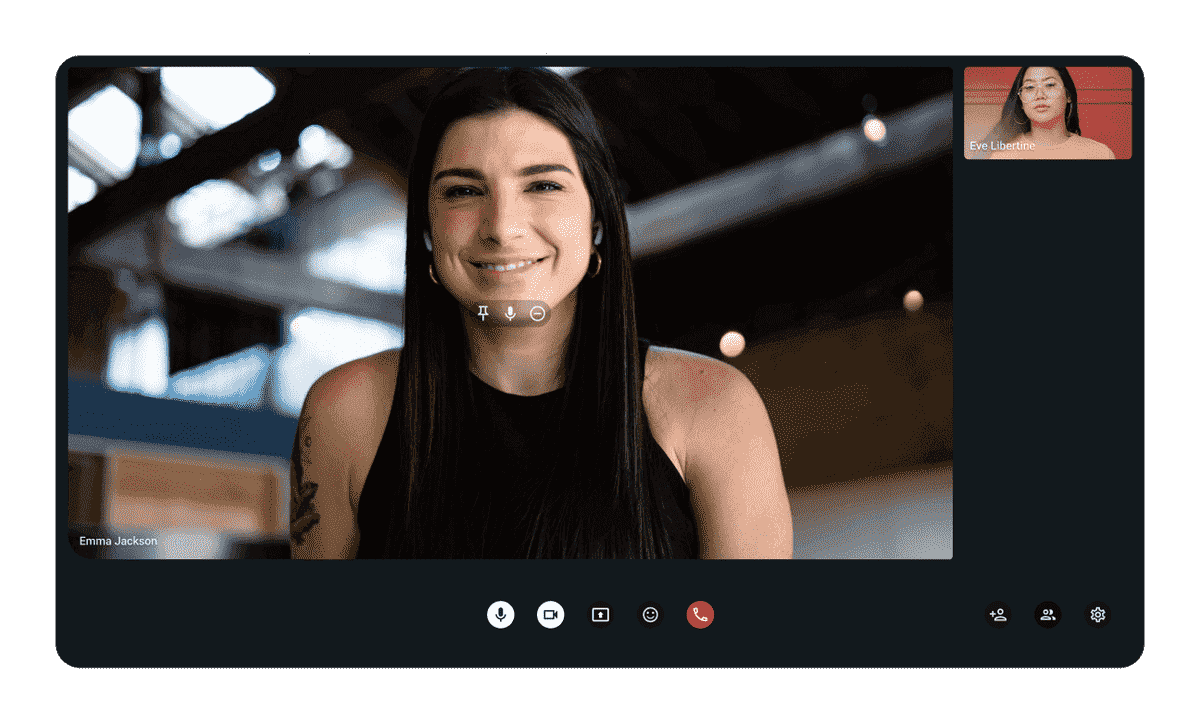
And, if you are worried that you will forget the meeting due to many duties, no worries, Pumble has a solution for you — reminders will always jog your memory about important obligations.








